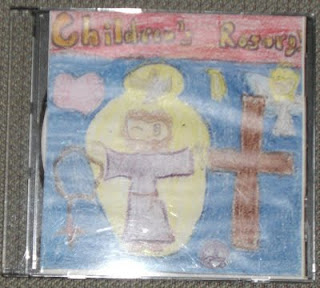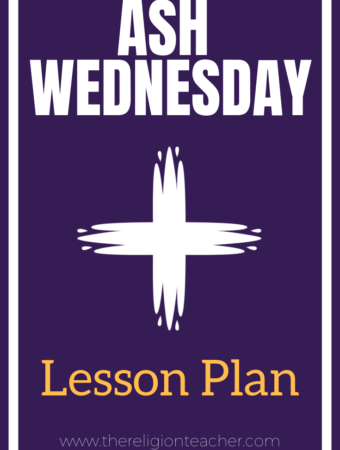The Challenges of Teaching the Rosary
Teaching the Rosary to little ones is no easy task. It is not simply teaching the prayers, but decoding the new vocabulary in the prayers so that children are able to understand them. It is not simply exposing children to the mysteries of the Rosary but enabling children to sequence these stories that are in fact mysteries in addition to remembering and understanding the long names of each one. And on top of all this the real goal is to introduce them to a meditational tool that is meant to bring them closer to God. Yes, it is daunting but was one of my favorite units to teach. Somewhere among the multiple challenges are divine graces and fruitful blessings.
Children’s Rosary CD
As part of my unit on the rosary my students made a children’s rosary CD. Living in Nashville it seems like everyone is connected to the music industry, so the recording part was easy, it was the reflections that took us some time.
Decoding the New Vocabulary
We began the unit by closely examining the prayers that make up the rosary. We looked at each one word by word. We defined new words and we translated the meaning of each prayer into common language. We also reflected on the prayers and shared these reflections as a class, in an attempt to convey and build the idea of meditation.
Learning the Mysteries
Introducing each mystery was like story time. My students loved it! I would divide the class into five groups. These groups would rotate between five centers that I had created in the room. Each center was named after a mystery of the rosary. So, on the day we learned the Joyful Mysteries the centers were the Annunciation, the Visitation, the Nativity, the Presentation, and the Finding in the Temple. Each center was filled with information about the mystery such as Bible stories from multiple Bibles (their student Bible, a little kids Bible, the St. Joseph edition of the Bible), a reflection on that mystery found in a book or on the internet, a song by Danielle Rose, pictures or paintings of the event, and anything else I could find that was grade level appropriate. Upon arriving at the center the group of students would spend time with each material, jotting down notes on a rosary note sheet. After all of the students had visited each center we would reconvene as a class to go over the information they had gathered to make sure it was accurate. This process took at least four days, one for each set of mysteries (Joyful, Sorrowful, Glorious, and Luminous).
Developing Student Reflections
After I was sure that students could identify and describe each mystery it was time for them to write their reflections. By drawing popsicle sticks from a cup each student was assigned a mystery of the rosary. If there were extra students then I would pair students. Each student was given the materials that were at the center that corresponded with that mystery. They would again spend time with these materials and review their notes from class. Then it was time to write their personal meditation. To guide this process they used a Rosary Meditations organizer. Once the mediations were written students recorded them onto the CD. While some of the reflections are not entirely theologically accurate they contain the authentic grace and sweetness that only children can convey so they were not edited.
Written by Jennifer Dees former 4th grade teacher at St. Ann’s school in Nashville, TN.
More Rosary Meditation Ideas
Here are four additional ways to teach students to meditate on the mysteries of the Rosary:



